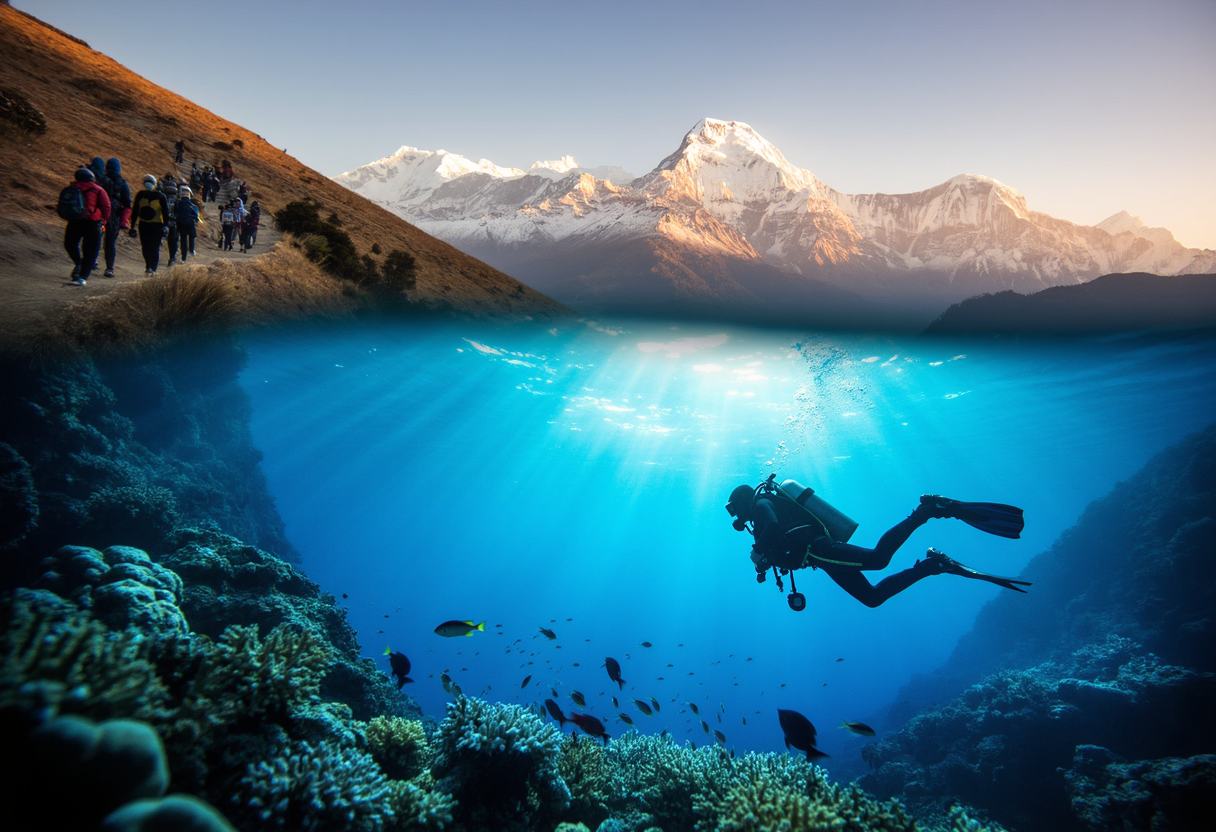The Rise of Adventure Tourism: Exploring New Frontiers in Travel
Adventure tourism has transformed the travel landscape, bringing thrill-seekers to remote destinations. This article delves into its growth, examining trends, cultural impacts, and the expanding role of technology. From hiking in the Himalayas to diving in coral reefs, adventure tourism offers unique experiences that challenge the norm.
Understanding Adventure Tourism
Adventure tourism has emerged as a significant segment of the travel industry, attracting those in search of unique experiences and adrenaline-pumping activities. This genre of tourism encompasses a wide range of activities, from trekking through dense jungles to kayaking on untamed rivers. The essence of adventure tourism lies in its ability to immerse travelers in local cultures while challenging their physical and mental limits. As we venture into this exploration, we will uncover what makes adventure tourism so appealing to millions around the globe. Furthermore, adventure tourism emphasizes sustainability, promoting eco-friendly practices among travelers and local businesses alike.
The Cultural Impact of Adventure Tourism
The influx of adventure tourism has significantly influenced local communities and cultures. As tourists seek authentic experiences, local traditions gain visibility and appreciation. Adventure tourism creates a unique platform for cultural exchange, allowing visitors to engage with indigenous practices while supporting local economies. However, it is vital to approach this interaction with respect and sensitivity, ensuring that cultural integrity is preserved. This interaction not only enriches travelers' experiences but also provides opportunities for communities to share their stories and traditions, fostering a deep connection facilitated by adventure tourism.
Technology and Adventure Tourism
In recent years, technology has played a transformative role in the realm of adventure tourism. Innovative tools such as mobile apps, virtual reality, and social media have revolutionized how travelers plan and share their adventures. Adventure tourism companies are increasingly leveraging these technologies to enhance customer experiences and provide personalized travel options. For instance, virtual reality can offer potential travelers a sneak peek of their journey, sparking interest and desire to explore new frontiers. Additionally, social media allows for the diffusion of adventure stories, inspiring others to engage in adventure tourism and broaden their travel horizons.
Popular Activities in Adventure Tourism
Adventure tourism encompasses a wide array of activities catered to thrill-seekers. From rock climbing and bungee jumping to wildlife safaris and glacier hiking, the options are virtually limitless. Each activity comes with its own challenges and experiences, appealing to differing levels of adventurers. For example, scuba diving in the Great Barrier Reef offers a mesmerizing underwater world to explore, while trekking to Machu Picchu provides breathtaking views and rich historical context. The diversification of activities within adventure tourism not only attracts diverse audiences but also allows travelers to tailor their adventures according to personal interests and capabilities.
The Economic Benefits of Adventure Tourism
The economic impact of adventure tourism cannot be overstated. As travelers flock to different destinations, local economies benefit from increased spending on accommodations, food, and guided tours. This economic influx fosters job creation and encourages investment in infrastructure, leading to improved services for both locals and tourists. Moreover, adventure tourism often stimulates investments in conservation efforts, as tourism companies recognize the importance of preserving natural landscapes that attract visitors. This approach not only ensures the sustainability of adventure tourism but also protects the environment and supports biodiversity.
Challenges Facing Adventure Tourism
Despite its benefits, adventure tourism faces several challenges. One significant concern is over-tourism, which can lead to environmental degradation and threaten the authenticity of local cultures. Furthermore, safety and risk management are paramount, as adventure activities inherently come with dangers that need to be addressed. Effective regulation and responsible tourism practices are essential in mitigating these risks and ensuring the longevity of adventure tourism. Encouraging travelers to respect local customs and embrace sustainable practices also helps preserve the allure of adventure tourism for future generations.
